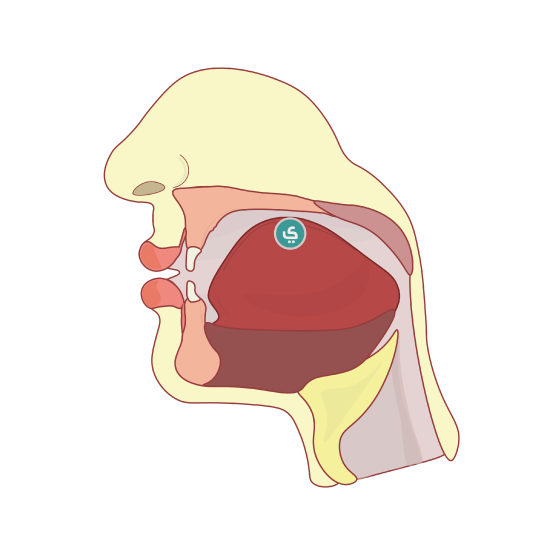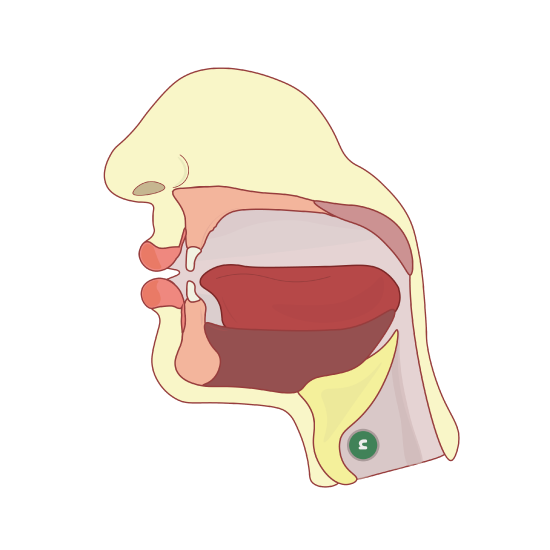1: Letters ب ت ث ي ء
( \newcommand{\kernel}{\mathrm{null}\,}\)
In this section, you will be able to:
- Read, write, and type the letters ب ت ث ن ي ء in their different shapes.
- Pronounce the letters ب ت ث ن ي ء with short and long vowels.
2.1.1 Formation & Articulation Points
| Name of Letter | Shape of letter | Pronunciation |
|---|---|---|
| Baa' | ب |
|
| Taa' | ت |
|
| Thaa' | ث |
|
| Noon | ن |
|
| Yaa' | ي |
|
| Hamza | ء |
|
Query 1.1.1
2.1.2. The Letters with Diacritical Marks (Short Vowels) & Long Vowels:
|
Letter with Long Vowels |
Letter with Short Vowels |
Letter |
Audio Recording |
|---|---|---|---|
| با بو بي | بْ بَ بُ بِ | ب |
|
| تا تو تي | تْ تَ تُ تِ | ت |
|
| ثا ثو ثي | ثْ ثَ ثُ ثِ | ث |
|
| نا نو ني | نْ نَ نُ نِ | ن |
|
| يا يو يي | يْ يَ يُ يِ | ي |
|
| أْ أَ أُ إِ | ء |
|
The video below presents the pronunciation of all Arabic letters with Diacritical Marks (Short Vowels):
The video below presents the Diacritical Marks and how they are used in different grammatical cases in definite words:
Query 1.2.1
Choose the correct answer(s):
Choose the correct answer(s):
The Letter Baa ب
Pronunciation of The Letter Baa' ب
The letter Baa' ب is pronounced like “b” in English. It is a consonant letter that gives the vowels a frontal quality. The place of articulation for the letter Baa' is by closing the two lips together, using the wet part of the lower lip. Baa' connects from both ends when it is in the middle position.

How to write the letter ب
The letter ب is a connecting letter and attaches to any letter preceding or following it within the same word. The main parts of this letter are the initial tooth and the dot beneath the body, which remain the same in all four shapes of the letter When this letter is placed at the end of a word, a second tooth is added at the tail of the letter. The tail is omitted when ب connects to another letter. You write the letter ب on the line from right to left. Begin with a small tooth or a small hook بـ then continue straight over the line, and end with another hook or tooth. After that, place the dot below the body of the letter. To write the letter ب at the beginning of the word, you write the tooth, and then continue straight as the exact length of the body (connector) and place the dot under the tooth بـ. Letter Baa ب has two connectors or segments. When ب occurs in the middle position, the letter connects to the preceding and following letters ــــبـــ . The final ـب looks like the independent ب. It connects to the preceding letter with the attached segment unless the previous letter does not have a connector. (Watch the video)
|
Letter at the End of a Word |
Letter in the Middle of a Word |
Letter at the Beginning of a Word |
Letter Shape |
|---|---|---|---|
| ـب | ـبـ | بـ | ب |
The video below demonstrates how to write the letter Baa' ب :
Query 2.1.2.3
Choose the correct answer(s):
The Letter Taa' ت
Pronunciation of The Letter Taa' ت
The letter Taa' is pronounced using the tip of the tongue with the roots of the top two incisors with aspiration. Taa' connects from both ends when it is in the middle position.

How to write the letter ت
The letter ت has the same shapes as the letter ب in all placements. However, it is written with two dots above its body, similar to a dash. (see the table and video)
|
Letter at the End of a Word |
Letter in the Middle of a Word |
Letter at the Beginning of a Word |
Letter Shape |
|---|---|---|---|
| ـت | ـتـ | تـ | ت |
The video below demonstrates how to write the letter Taa' ت :
Query 2.1.2.4
Choose the correct answer(s):
The Letter Thaa' ث
Pronunciation of The Letter Thaa' ث
The letter Thaa' is pronounced like the sound of "th" in the word three, thumb, and truth. The articulation point of Thaa' ث is the tip of the tongue with the ends of the upper two incisors. Thaa' connects from both ends when it is in the middle position. (see the table and figure)

How to write the letter ث
The letter ث is a connecting letter with two connectors, and it has the same shape as the letters ب ت. The letter ث is written like ب ت, but has three dots on the top. In hand-writing, the three dots are connected and they appear as the shape of the upside-down, English letter "v".
(Watch the video)
|
Letter at the End of a Word |
Letter in the Middle of a Word |
Letter at the Beginning of a Word |
Letter Shape |
|---|---|---|---|
| ـث | ـثـ | ثـ | ث |
The video below demonstrates how to write the letter Thaa' ث :
Query 2.1.2.5
Choose the correct answer(s):
The Letter Noon ن
Pronunciation of The Letter Noon ن
This letter Noon ن is pronounced using the tip of the tongue and what lies opposite to it from the gum like the English word "noon." This letter connects from both ends when it is in the middle position. (see the table and figure)

How to write the letter ن
The letter ن is a connecting letter whose shape resembles the ب in the initial نـ, and medial position ـنـ, except for the placement of the dot above the letter. It differs from ب in that the independent and final forms of ن take a characteristic tail shape that dips well below the line.
In the final position, ـن begins with a tooth and then dips immediately into a deep tail below the line, then comes back up across the line.
|
Letter at the End of a Word |
Letter in the Middle of a Word |
Letter at the Beginning of a Word |
Letter Shape |
|---|---|---|---|
| ـن | ـنـ | نـ | ن |
The video below demonstrates how to write the letter Noon ن :
Query 2.1.2.6
Highlight the correct answer(s):
The Letter Yaa' ي
Pronunciation of The Letter Yaa' ي
The letter Yaa’ ي is pronounced “ee” when acting as a vowel. It can also be a consonant at the beginning of a word, middle, or end, and it can carry a short vowel, be preceded, or be followed by a long vowel.
The consonant yaa' ي is pronounced like the sound of the English letter "y" in the word "yes." Yaa' place of articulation is in the middle of the tongue and what lies opposite to it from the roof of the mouth. It connects from both ends when it is in the middle position.

How to write the letter ي
The letter ي is a connecting letter. The letter ي is written like ب ت ث in the initial and medial positions. When writing the independent ي, begin above the line and curve slightly upwards and around in an s-like shape. Continue below the line into a broad, flat curve, and bring the tail back up over the line. You write the final ي the same, but with the addition of a segment. (see the table and watch the video)
|
Letter at the End of a Word |
Letter in the Middle of a Word |
Letter at the Beginning of a Word |
Letter Shape |
|---|---|---|---|
| ـي | ـيـ | يـ | ي |
The video below demonstrates how to write the letter Yaa' ي :
Query 2.1.2.7
Choose the correct answer(s):
The Consonant Hamza ء - أ - ؤ - ئ
Pronunciation of The Hamza ء
It is a sound you make in English when you say a word that begins with a vowel, like: apple, igloo, egg, order, if, etc. In linguistic terminology, this sound is called a glottal stop. The articulation place of the ء is at the deepest part of the throat which is the furthest away from the mouth and the closest to the chest.
To pronounce ء: say “uh-oh” several times, as you pronounce the first vowel that point of the place is the articulation of the “Hamza” ء.

How to write the consonant ء
The actual shape of "Hamza" ء is a small "c" shape, which continues into a line on the bottom. (See the table and Video)
|
Letter at the End of a Word |
Letter in the Middle of a Word |
Letter at the Beginning of a Word |
Letter Shape |
|---|---|---|---|
| ـأ - ـؤ - ـئ | ـئـ | ئـ | ء - أ - ؤ - ئ |
The video below demonstrates how to write the Consonant Hamza ء
Query 2.1.2.8
Highlight the correct answer(s):
2.1.3. Activities:
Query 2.1.3.1
Match each letter with its place of articulation:










